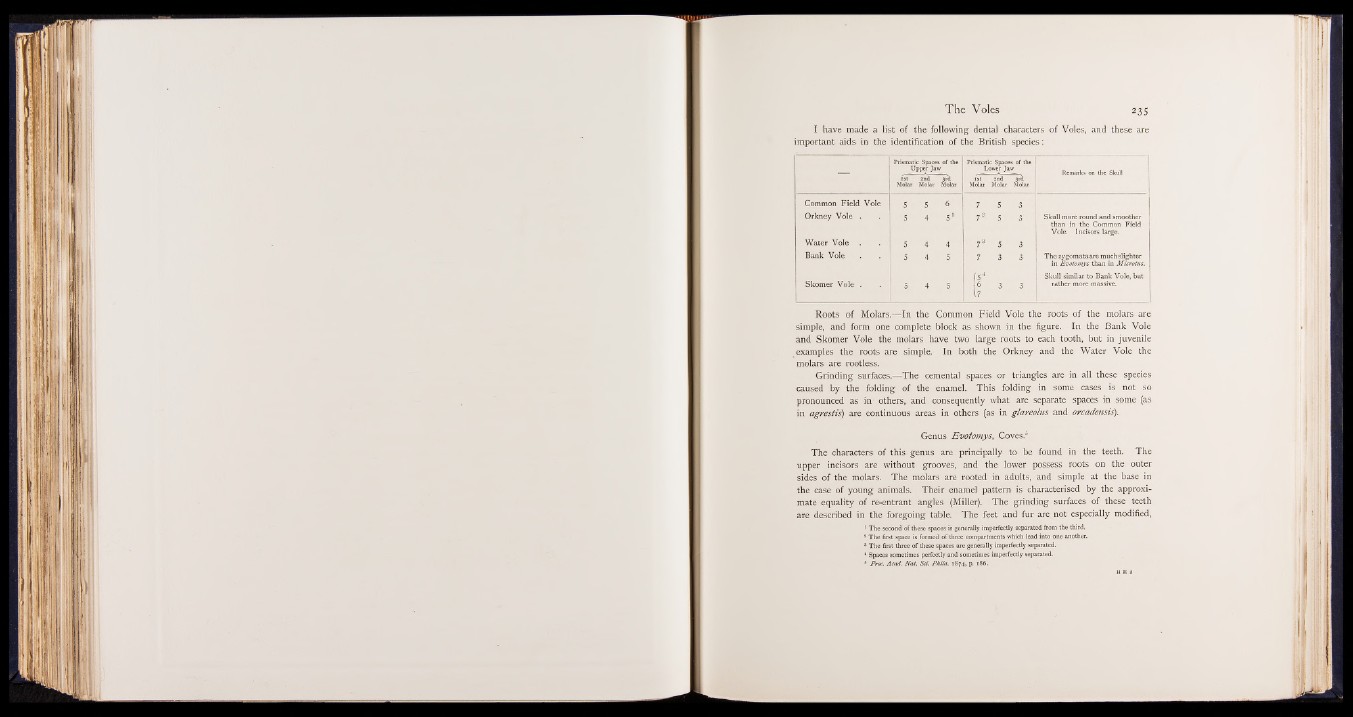
The Voles 235
I have made a list of the following dental characters of Voles, and these are
important aids in the identification of the British species:
Prism tie Spaces of the Prismatic Spaces of the
Remarks on the Skull
Mola
2nd
l'-viiïolar
3rd
Molar Molar
2nd
Molar
3rd
Molar
Com mon F ie ld V o le 5 5 6 7 5 3 '
O rk n e y V o le . 5 4 5 1 7 2 3 Skull more round and smoother
than in the Common Field
Vole. Incisors large.
W a te r V o le 5 4 4 7 3 5 3
B a n k V o le 5 4 7 3 1 The zygomata are much slighter
in Evotomys than in Microtus.
S k om e r V o le . 5 4 5
(5 4
r
(7 3 3
Skull similar to Bank Vole, but
rather more massive.
Roots of Molars.— In the Common Field Vole the roots of the molars are
simple, and form one complete block as shown in the figure. In the Bank Vole
and Skomer Vole the molars have two large roots to each tooth, but in juvenile
examples the roots are simple. In both the Orkney and the Water Vole the
molars are rootless.
Grinding surfaces.—The cemental spaces or triangles are in all these species
caused by the folding of the enamel. This folding in some cases is not so
pronounced as in others, and consequently what are separate spaces in some (as
in agrestis) are continuous areas in others (as in glareolus and orcadensis).
Genus Evotomys, Coves.8
The characters of this genus are principally to be found in the teeth. The
upper incisors are without grooves, and the lower possess roots on the outer
sides of the molars. The molars are rooted in adults, and simple at the base in
the case of young animals. Their enamel pattern is characterised by the approximate
equality of re-entrant angles (Miller). The grinding surfaces of these teeth
are described in the foregoing table. The feet and fur are not especially modified,
1 The second of these spaces is generally imperfectly separated from the third.
2 The first space is formed of three compartments which lead into one another.
3 The first three of these spaces are generally imperfectly separated.
4 Spaces sometimes perfectly and sometimes imperfectly separated.
* jProc. Acad. Nat. Sci. Ptula. 1874, p. r86.